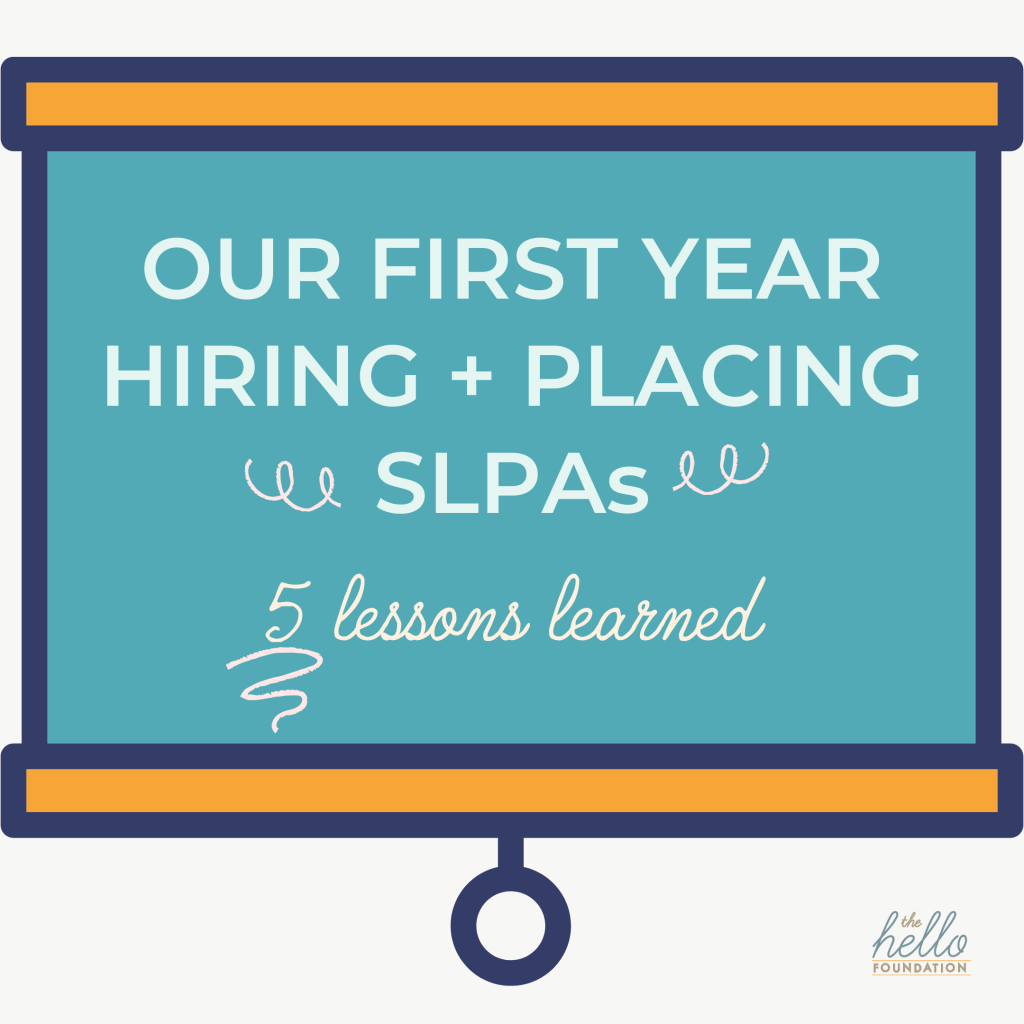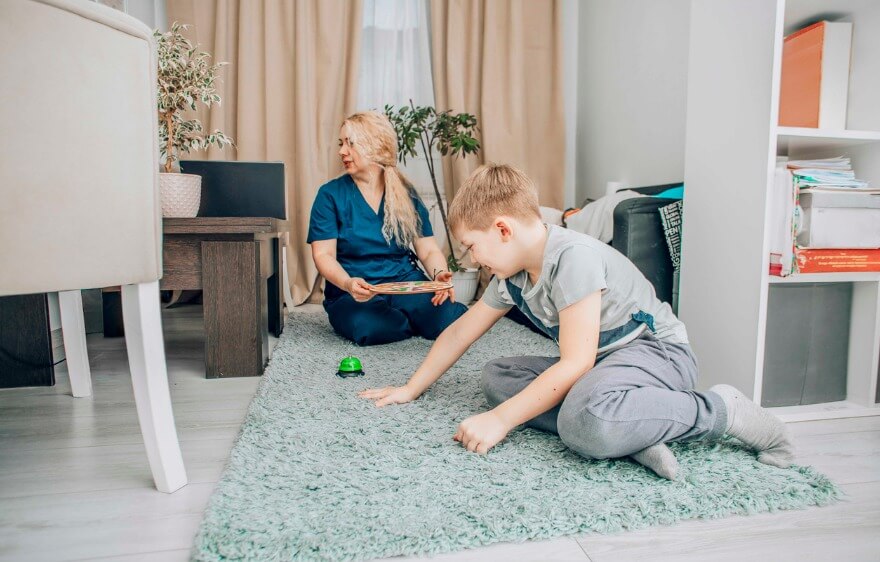The writing was on the wall, and we knew we had to do something different for the fall of 2021. Like everyone else in education, The Great Resignation touched our company. People needed to catch their breath, circle the wagons around their own families, and frankly, do some reassessment of how well they were personally coping. Everyone who needed the break got it. That’s a core value at Hello, after all — Practice Work-Life Balance. We saw this moment as an opportunity to lean into supporting staff.
Of course, staff working less than full-time or taking leaves meant we needed to bring new people on board, particularly SLPs. But we’ve been in this business for a very long time and knew that there was no group of SLPs just sitting at home waiting for us to offer them a job. We needed to approach The Great Resignation differently if we wanted to succeed. We started by asking ourselves the following series of questions to help guide our thinking:
Question 1: What is actually needed by districts?
Answer: Reliable, high-quality service for students in the area of speech and language.
Question 2: What are the barriers to them getting what they need?
Answer: Most districts traditionally think about the position they’re hiring for rather than the tasks they need someone to complete. That is, they say “we need to hire an SLP” rather than “we need pre-referral intervention, evaluation, direct service, special education compliance, etc.” Therefore, the most significant barrier to districts having their needs met is the perpetual shortage of licensed, certified SLPs who can perform all of the duties on the job description.
Question 3: Does every task on that job description HAVE to be performed by an SLP?
Answer: No. A certified and credentialed SLP Assistant (SLPA) is not only able but is highly qualified to work directly with students without the direct supervision a paraprofessional requires.
Question 4: If we could split the districts’ SLP job description between two or more people, what would that look like?
Answer: Under the direction of an SLP, SLPAs could do the bulk of direct service to students. Meanwhile, SLPs could work at the top of their licenses doing things like diagnostics, team meetings, and teacher and parent consultations for a more significant number of students than they could without an assistant.
Question 5: Would this meet district needs while reducing the number of SLPs we needed to hire?
Answer: Yes.
5 Lessons Learned In Our First Year Hiring And Placing SLPAs
Once we worked through that exercise, we hired a whole bunch of impressively qualified SLPAs and put them to work in a variety of settings. Here are 5 lessons we’ve learned in our first year of hiring and placing SLPAs:
1. Put out a job posting for SLPAs, and you’re going to get A LOT of resumes.
The upside of these professionals being undervalued in the current educational environment is that they are eager to go where a job exists and where people will appreciate them. We heard many tell-all stories about school districts — paying SLPAs as paraprofessionals despite their advanced skill sets and credentialling, administrators putting SLPAs licensure at risk by not having clarity on the scope of professional responsibilities, and educators not being informed of how best to use SLPAs in a school setting.
2. When hiring, it’s reasonable to seek out SLPAs with experience in the schools.
We were shocked at how many of our candidates hadyears f experience in the school setting doing other jobs. They had been early intervention educators, paraprofessionals, classroom teachers, and special education aides. When your company’s priority is to build relationships within school districts by putting kids first, this was a huge asset!
3. MOST special education directors and school administrators do not know the scope of practice of an SLPA.
Our sales team had to adjust their efforts to teach district leaders how they could utilize an SLP Assistant to support students with speech and language needs. We ended up developing this super awesome infographic to help our education efforts, and it went a long way in helping to differentiate Para, SLPA, & SLP.
4. We’re glad we retained control of who the supervising SLP would be.
We decided to do this to ensure that the districts taking this leap with us would have the highest quality experience possible. District SLPs can undoubtedly be awesome, too, but we could better control everyone’s experience if both SLPs and SLPAs were Hello employees.
5. Expanding our leadership team to have a direct manager of our SLPAs proved invaluable.
In this first year of implementation, it was critical that our first cohort of SLPAs would feel adequately prepared and supported. Speech-language pathology is a field where we honestly don’t have black and white answers to many questions. We felt strongly that we needed to provide folks with a dedicated person who could talk through those gray areas with them and their supervising SLP. Likewise, we knew that the development of this new program would need someone at the helm who was responsible for seeing the bigger picture, systemic problem solving, and further innovation.
We are grateful for the leap of faith those administrators new to SLPAs took this past fall. While others were panicking as their specialists were giving notice, they trusted us and our out-of-the-box ideas for continuing excellent service to students. And now, as we’re edging into spring, our sales team is already fielding calls from many of them asking if their SLP/SLPA team(s) can return in the fall. That’s the best compliment we can imagine, and we look forward to another year of developing and expanding this program that gets students the help they need and deserve.






